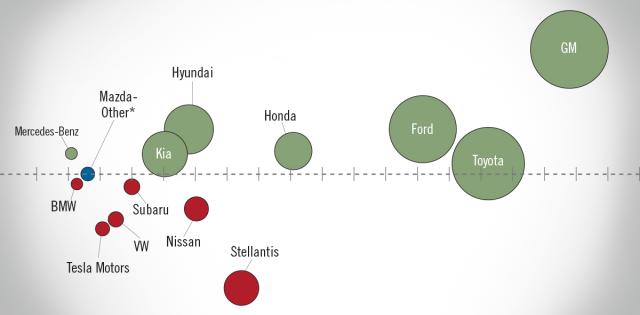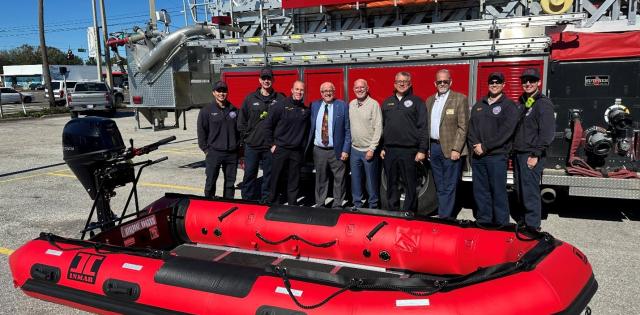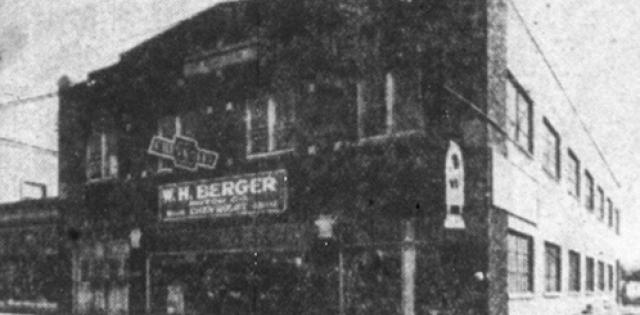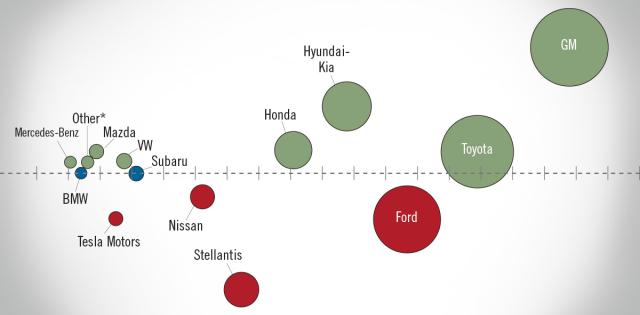The article below is sourced from Bloomberg Wire Service. The views and opinions expressed in this story are those of the Bloomberg Wire Service and do not necessarily reflect the official policy or position of NADA.
The United Auto Workers has reached a tentative labor agreement with Ford Motor Co., putting pressure on the carmaker’s two chief rivals to end a protracted strike that has cost the industry billions of dollars.
Ford agreed to a record 25% hourly wage hike over the life of the contract, which exceeds four years. With cost-of-living allowances, the top wage rate is expected to increase by 33%. The top pay will be over $40 an hour, the union said.
Ford, which has the largest UAW workforce among Detroit’s three legacy automakers, was the first company to offer a counter-proposal to the union and now is the first carmaker to settle. UAW leadership will vote on the deal Oct. 29. It then must be ratified by Ford’s 57,000 US hourly workers, a process that could take weeks.
“While members have occasionally rejected previous contracts, we expect enthusiastic support for this year’s agreement given significant union wins,” Ryan Brinkman, an analyst at JPMorgan Chase & Co. with an “overweight” rating on Ford’s stock, wrote in a research note Thursday. He estimated the deal will likely add $1.5 billion in annual costs to the automaker for the life of the contract, though details remain unclear.
Ford shares rose 2.3% to $11.80 as of 9:35 a.m. in New York. The stock is up about 7% this year.
Chief Executive Officer Jim Farley is expected to discuss the provisional accord with the UAW in a call with analysts Thursday after the company reports third quarter earnings following the close of regular trading.
Pay was one of the last issues to be ironed out during the talks. The union had originally sought a 40% raise and 32-hour work week before reining in its demands. Ford earlier agreed to cost-of-living allowances, converting temp hires to full-time and expediting how long it takes workers to get to the top wage rate.
“We won things nobody thought was possible,” said UAW President Shawn Fain Wednesday night in a video posted on X. “Since the strike began, Ford put 50% more on the table.”
In a statement on Wednesday, President Joe Biden highlighted “worker power” when congratulating Ford and the union on reaching a deal.
Left out of Wednesday’s announcement were details on key issues including wages and benefits at battery plants and Fain’s initial demand for a 32-hour workweek.
Fain did not address whether the tentative agreement covers Ford’s four battery plants that are under construction or helps the UAW organize the new electric truck assembly plant the automaker is building in Tennessee.
Ford has sought manufacturing flexibility as it converts factories to building electric vehicles, which have seen sales growth slow. In July, Ford pulled back on it electric vehicle production and cut prices on its F-150 Lightning plug-in pickup truck as it said buyers were suffering EV sticker shock.
Rival Deals
Ford said in a statement it was “pleased” to reach a deal with the UAW and restart its plants, “calling 20,000 Ford employees back to work and shipping our full lineup to our customers again.”
General Motors Co. and Stellantis NV are set to meet with the UAW on Thursday and the union hopes they will agree to the same terms, according to people familiar with the talks who weren’t authorized to speak publicly.
The UAW told Ford workers to go back to work during the ratification process to “keep the pressure on Stellantis and GM,” said Chuck Browning, the union’s top Ford negotiator.
GM and Stellantis said in separate emailed statements that they’re working with the UAW to reach agreements “as soon as possible.”
Lost Earnings
The strike that began Sept. 15 initially affected one vehicle-assembly plant at each of Detroit’s legacy automakers. It was the first time all three companies were targeted at once — a bet by Fain to keep them guessing about his next move. Within six weeks, the strike grew to include more than 45,000 workers at eight assembly plants and 38 parts-distribution facilities.
After the UAW launched a surprise walkout at Ford’s highly profitable Kentucky Truck Plant on Oct. 11, it announced that it was switching up its strategy to call strikes with little notice, which it said was a response to companies slow-walking talks before making any substantial offers.
Two more surprise strikes followed that targeted Stellantis and GM plants. Fain suggested that a bigger strike was in store for Ford if it hadn’t reached an agreement.
“Ford knew what was coming on Wednesday if we didn’t get a deal. That was checkmate,” Fain said in the video on X.
What Bloomberg Intelligence Says:
“Ford’s tentative labor agreement with the UAW may increase its costs by more than $900 million in its first year, based on an 11% raise in year one, putting additional pressure on the company’s efforts to enhance its mediocre profitability.”
— Joel Levington, BI Director of Credit Research
The strike was estimated to cost GM, Ford and Stellantis about $2.1 billion in lost earnings before interest and taxes as of Oct. 23, according to Deutsche Bank analyst Emmanuel Rosner. GM this week pulled its earnings guidance after the strike muddied its outlook.
For more stories like this, bookmark www.NADAheadlines.org as a favorite in the browser of your choice and subscribe to our newsletter here:










